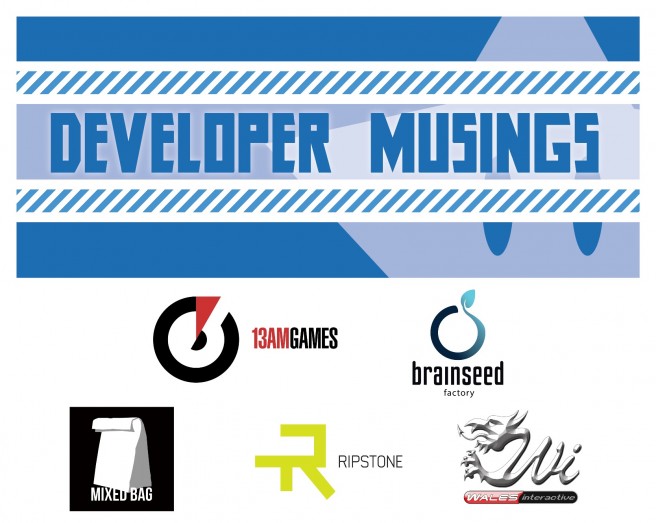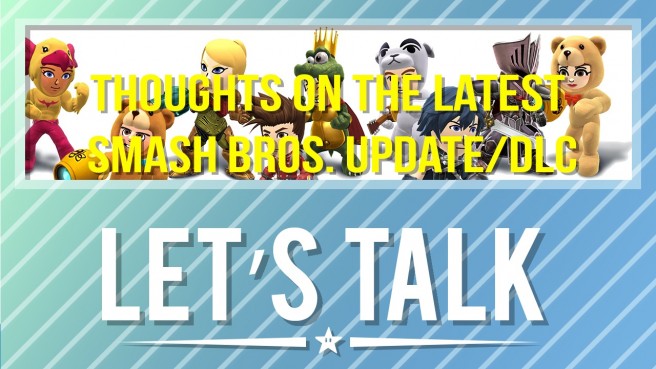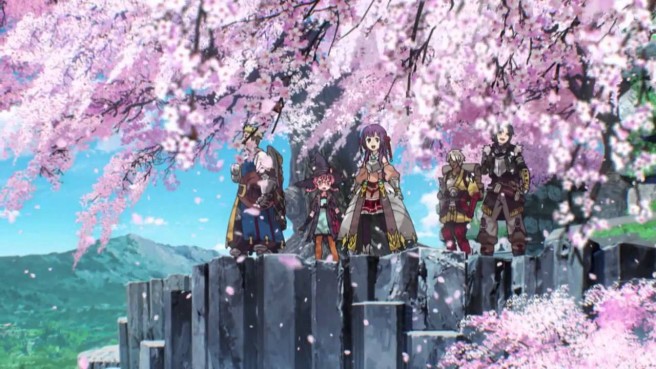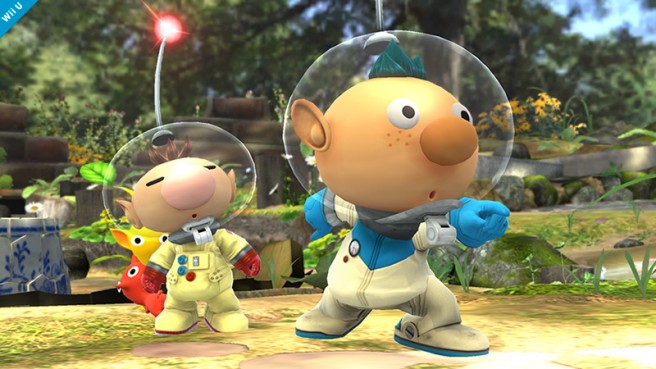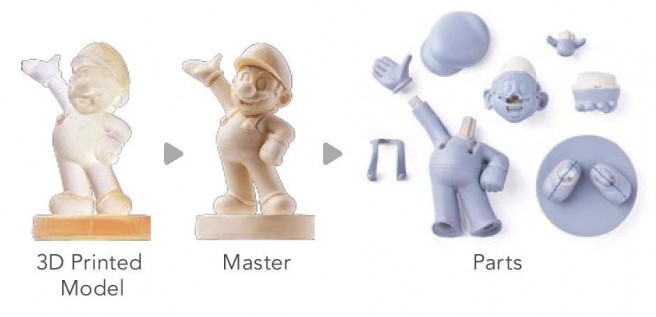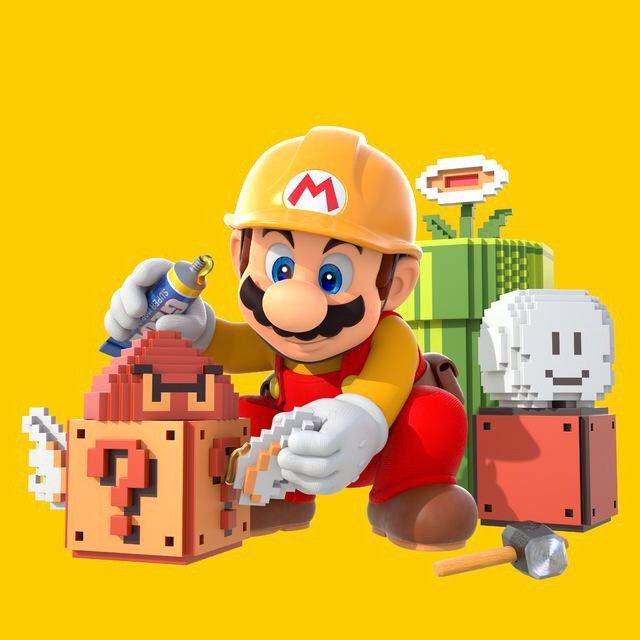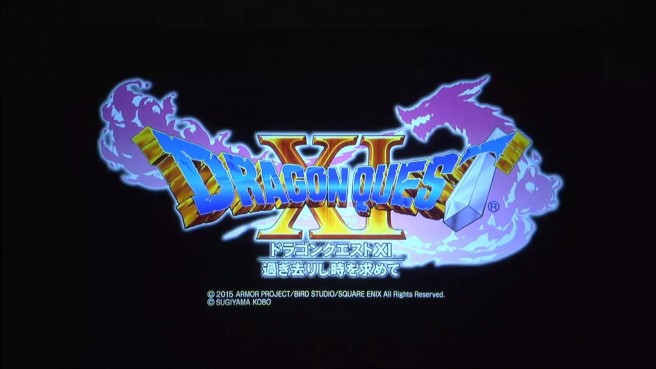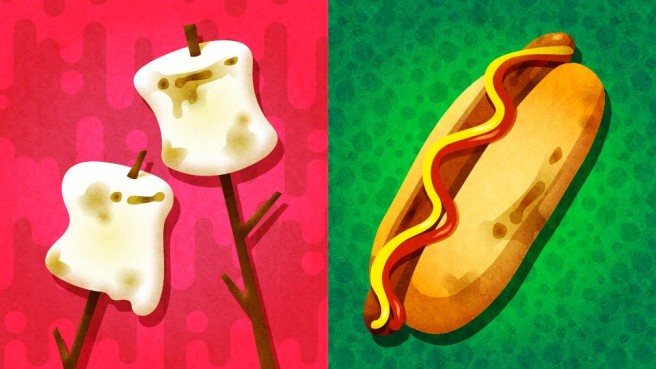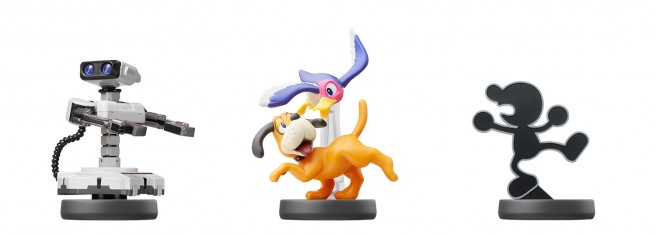[Interview] Nintendo’s Damon Baker talks Nindies@Home – origins, challenges, future, and more
Posted on 10 years ago by Brian(@NE_Brian) in Interviews | 3 Comments
Damon Baker is Nintendo of America’s Senior Marketing Manager of Publisher and Developer Relations. He’s also the new face of the company’s indie efforts.
Over the past few months, Baker has led the way on a couple of surprising and interesting eShop programs from Nintendo. The Humble Nindie Bundle was made available in late May, and just a few weeks later, Nintendo introduced Nindies@Home. Along with providing Wii U owners with the opportunity to try out new indie titles well before their release during E3 week, Nindies@Home had the added bonus of giving those who downloaded the demos a 15 percent discount when the full games launch.
We recently had a chat with Damon Baker to go more in depth regarding Nindies@Home. Our discussion included talk about how the idea came to be, the challenges of bringing it to fruition, and the possibility of seeing it again in the future. Head past the break to read our full interview.
More: Damon Baker, highlight, Nindies@Home, top
[Developer Musings] Playtesting in the living room – perspectives on Nindies@Home
Posted on 10 years ago by Brian(@NE_Brian) in Developer Musings | 1 Comment
As part of its E3 2015 plans, Nintendo launched Nindies@Home in June. This was a special one-week promotional period in which Wii U owners were given the opportunity to download and play demos from upcoming indie titles. For gamers who couldn’t make it to E3, it allowed them to experience some of the excitement of being at the expo.
We reached out to five developers who were involved with Nindies@Home to share some thoughts about participating in the program. Below you’ll find some musings from 13AM Games (Runbow), Brainseed Factory (Typoman), MixedBag Games (forma.8), Ripstone (Extreme Exorcism), and Wales Interactive (Soul Axiom). What was it like for these studios to participate in Nintendo’s newest eShop initiative? How was it getting the demos up in time for E3? How do they feel about the program as a whole? These were just some of the topics the developers we reached out to touched upon, and each team shared some very interesting insight about the process of being included in Nindies@Home. Continue on below for their thoughts.
More: highlight, Nindies@Home, top
[Let’s Talk] Thoughts on the latest Smash Bros. update/DLC
Posted on 10 years ago by Brian(@NE_Brian) in Let's Talk | 23 Comments
Let’s Talk #17: Thoughts on the latest Smash Bros. update/DLC
Nintendo gave Super Smash Bros. for Wii U/3DS a whole bunch of content last night. While there weren’t any new characters, we do have access to a number of new things.
Both versions of Smash Bros. added two classic levels: Hyrule Castle and Peach’s Castle. Several new Mii Fighter outfits came out as well.
On Wii U, Nintendo finally launched the game’s Tournament Mode. Uploading replays to YouTube is also now possible.
The latest Smash Bros. content has only been out for about a day, but I still wanted to have this week’s discussion focused on what’s new in both games. Have you been able to give the new stages a whirl? What are your thoughts on the Tournament modes? I’m also curious: how many of you are actually interested in the Mii Fighter costumes? Sound off in the comments below!
Highlights from last week’s topic: Most anticipated Wii U games
Guymelef
My most anticipated announced games for Wii U would be (in no particular order):
Xenoblade Chronicles X
Lego Dimensions
Guitar Hero Live
Star Fox
Shin Megami Tensei X FE
Fatal Frame
Devil’s Third
Zelda U
For 3DS (I know it’s not part of the survey, but just to include): Fire Emblem Fates and Monster Hunter X
while I’m interested in Yoshi’s Wooly World and Mario Maker, they’re not on top of my list.
Killey
Fatal Frame V, Rodea: The Sky Soldier and Star Fox Zero are the games I’m looking forward to, I’lI probably add Devil’s Third and that’s it for this year. Zelda and SMT x FF so far for 2016
David Arkema
The wii u games I looking forward the most are
Skylanders superchargers, because I love the amiibo support, this will ve my first skylanders game and the gameplay looks really fun.
Devil’s third, because I need an action game next to bayonetta and singlepalyer gameplay looks amazing and what you can do the online multiplayer looks funny like hell, but may need some patches.
Xenoblade chronicles x, because I loved the first one the wii and I love wandering in a massive openworld with gorgeous enemies and you can ride in a mechsuit.
Pokken Tournament, because I need a (wii u) pokemon game that isn’t a mainstream pokemon game (fire red/emerald/y) and I really love fighting game, especially street fighter and ssb. graphical it looks amazing, but the cast (playable characters) needs to be expanded.
superphillip32
Super Mario Maker – As someone who really enjoys level design and wants to go into the field of game design after graduating college, Super Mario Maker’s creation tools seem like a godsend to me. I will get to make levels with what looks like to be a very easy and intuitive interface, practice my skills and creativity with designing levels, and get inspiration from other creators while enjoying playing the levels as well.
Yoshi’s Woolly World – It pained me to see the North American release date of Yoshi’s Woolly World be so far away in comparison to the European, Oceania, and Japanese launches. The game looks like what many have been wanting from the Yoshi series since Yoshi’s Island. Throw in some awesome looking levels, hidden goodies, and a reported challenge, and I can’t wait to be able to play this game.
Star Fox Zero – I’ve waited a long time for a new Star Fox game that I really enjoy. I did love Assault, and of course I greatly was enamored with 64. Command was okay, but now we have another traditional Star Fox game to look forward to. I trust Nintendo and Platinum Games to create a compelling and engaging campaign to blow me and other players away.
[Review] Etrian Odyssey 2 Untold: The Fafnir Knight
Posted on 10 years ago by Dennis Gagliardotto(@LyonHart_) in 3DS, Reviews | 1 Comment
System: Nintendo 3DS
Release: August 4, 2015
Developer: Atlus
Publisher: Atlus
Author: Dennis
Etrian Odyssey 2 Untold is an epic dungeon-crawling experience in which you and a fixed group of party members embark on a journey. The objective is to complete a century-old ritual by a princess you randomly run into inside the forest close to the town your newly formed guild stumbles upon, High Lagaard. It is here you familiarize yourself with the townsfolk and collect quests to help you on your way to completing this ritual with the Princess. However, while deep in the dungeons heading towards the location where the ritual will take place, you come across a large monster in which you are forced to fight. It is here you stumble into other adventurers from faraway places and transform suddenly into an inhuman monster— wielding the power of a legendary sentient being once known as the Fafnir Knight. From this point forward you aim to figure out exactly why, and how, you were bestowed this power. You must uncover this mystery all while trying to complete this ritual with new friends and allies. Just as you have your own special skills and abilities—so do your allies, each with their own individual strengths and weaknesses. You are the hero of this tale, with your guild and a princess; you embark on a quest to uncover the truth behind the origins of the powerful Fafnir Knight.
Alph was considered as a possible full-blown clone character in Smash Bros. Wii U/3DS
Posted on 10 years ago by Brian(@NE_Brian) in 3DS, News, Wii U | 11 Comments
Alph is included in Super Smash Bros. for Wii U and 3DS as a palette swap for Olimar. Interestingly, it seems as though he was once considered as a full-blown clone character.
That information is based on design documents that come straight from Masahiro Sakurai (and translated by Source Gaming). For the modeling team, Sakurai has a note about Olimar which states: “Consider including Alph (Pikmin 3 protagonist) as a clone character.”
Ultimately, Alph didn’t make it onto the Smash Bros. Wii U/3DS roster. Maybe he’ll be considered again for the series’ next entry…
Nintendo on the challenges of making amiibo, shows how they’re tested for safety and reliability
Posted on 10 years ago by Brian(@NE_Brian) in General Nintendo, News | 12 Comments
The Nintendo CSR Report 2015 was recently published. In the digest version, there’s a big focus on amiibo, including a few interviews.
One portion of the report features an interview with Nintendo’s Masaki Amano. He spoke about the challenges faced in developing amiibo at one point, noting:
Nintendo has developed a variety of game systems such as Wii U and Nintendo 3DS. However, amiibo development was extremely challenging because we couldn’t use our existing knowledge at all and had to proceed through everything by trial and error.
For example, when we make a game system we usually make a mold of each part by cutting the metal directly from 3D data using a drill or some other tool. For a figure, however, you use almost no machinery at all to make the mold, and do everything by hand instead. For amiibo, we started by creating a master. We then took this master apart to consider how to easily coat colors or create each mold. Link, for example, has 24 separate pieces.
We took a cast of the first mold by pressing clay into each part of the master and then coating it with silicon. Finally, after repeatedly duplicating the mold with harder substances, we used iron to create a metal mold. Although we could not apply our existing knowledge or experiences, we learned along the way as we pursued absolute quality.
That wasn’t the only notable element from the Nintendo CSR Report 2015. We also get a look at how Nintendo tests amiibo for safety and reliability. See the image below.
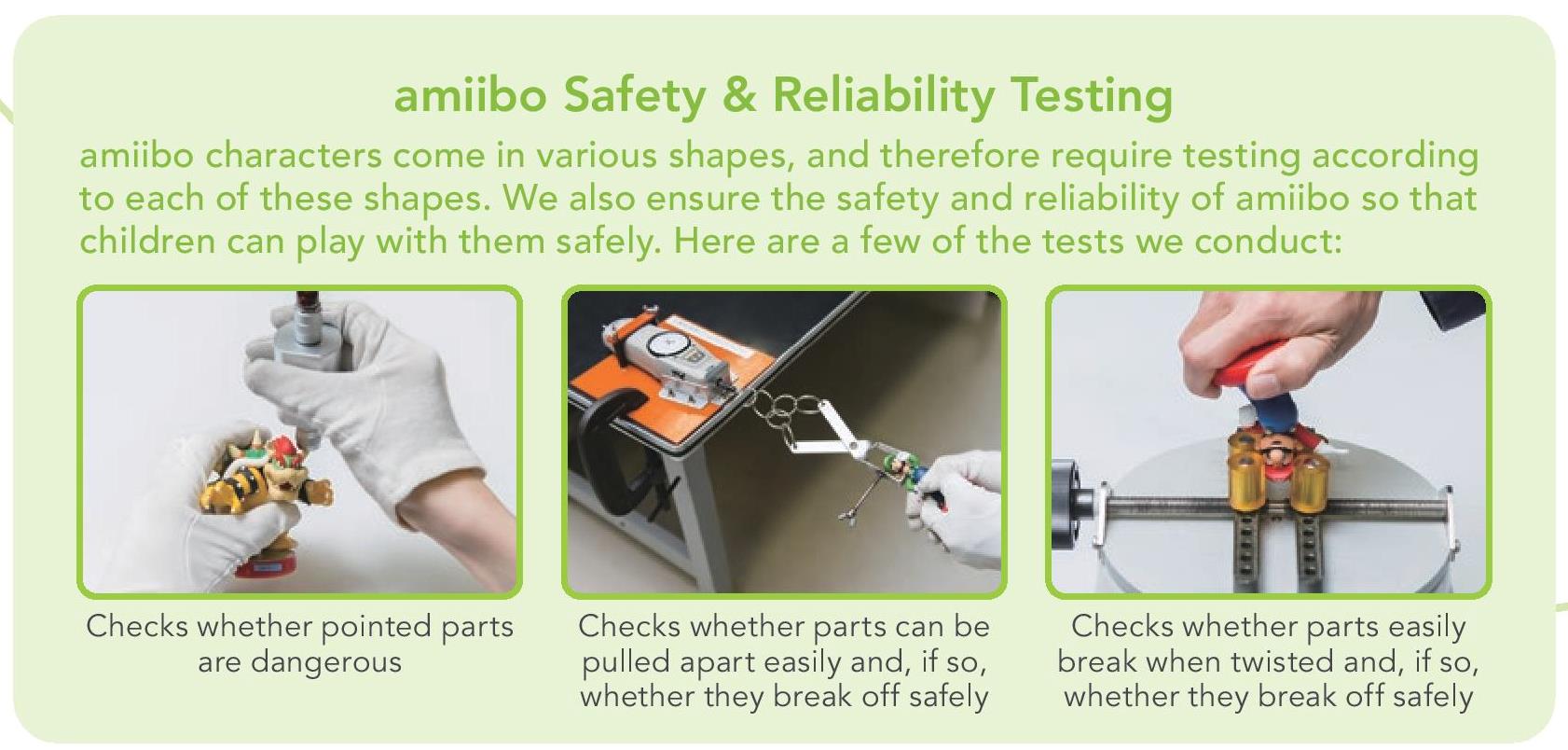
More: Amiibo, interview, Masaki Amano, top
Nintendo will be checking Super Mario Maker courses to determine difficulty level
Posted on 10 years ago by Brian(@NE_Brian) in News, Wii U | 12 Comments
Courses uploaded by the community in Super Mario Maker will feature different difficulty labels. For the most part, this is chosen dynamically as more players try out the level. As an example, if a course has only been completed 10 times out of 150 attempts, you’ll probably notice that it’s in the hard category.
This isn’t the only way that a course in Super Mario Maker will earn its difficulty label. Engadget reports, “user-created levels are also vetted by Nintendo moderators to determine level difficulty before it’s available for anyone to download.”
More: Super Mario Maker, top
Yuji Horii on Dragon Quest XI – story theme, choice of platforms, protagonist, and more
Posted on 10 years ago by Brian(@NE_Brian) in 3DS, News | 4 Comments
Gematsu has translated a number of comments from Dragon Quest creator Yuji Horii about the series’ newest entry, Dragon Quest XI. Horii spoke with Jump about several topics, including the story theme, platform choice, protagonist, and more.
Head past the break for Horii’s comments. You can find Gematsu’s original article here.
More: Dragon Quest XI, interview, Square Enix, top, Toylogic, Yuji Horii
Splatoon’s third North American Splatfest is next week
Posted on 10 years ago by Brian(@NE_Brian) in News, Wii U | 48 Comments
Splatoon’s third North American Splatfest is taking place next week, Nintendo has revealed. Players will be able to choose between two sides: roasting marshmallows or hot dogs.
The Splatfest will kick off at 12 PM ET on August 8, and 9 PM PT on August 7. It will last through the following day.
Splatfest will be held from 8/7 at 9 PM PT until 8/8 at 9 PM PT! Let us know what you’d rather roast over a campfire! pic.twitter.com/UDcTOLiscI
— Nintendo of America (@NintendoAmerica) July 31, 2015
So how about it – which side will you choose?
Rumor: GameStop taking pre-orders for R.O.B, Duck Hunt, Game & Watch amiibo 3-pack on August 8
Posted on 10 years ago by Brian(@NE_Brian) in General Nintendo, Rumors | 2 Comments
The R.O.B., Duck Hunt, and Game & Watch amiibo could be seeing their first pre-orders as early as next week. Speculation has surfaced about an event GameStop will be hosting on August 8, and an exclusive three pack containing the three figures will supposedly be offered.
Here’s the lowdown:
– Special GameStop amiibo event
– Stores are being allocated extra hours in the early morning
– The 3-pack will be a GameStop exclusive (not the individuals)
– The 3-pack will be a Retro Pack featuring R.O.B., Duck Hunt, and Mr. Game & Watch
– Each store will have roughly 30 available for pre-order
– Pre-orders will be the traditional “head in store and put $5 down” style rather than Web In Store
– If a location allows more than their allocated pre-orders, the customer will not receive their pre-order
– As of now, the 3-pack is the only pre-order officially announced internally for the 8/8 event
– As a side effect, GameStop most likely not be receiving individuals of R.O.B., Duck Hunt, or Mr. Game & Watch
– Pro members may be allowed in to stores an hour early
All of this information is unconfirmed for the time being. If we hear anything official, we’ll be sure to bring the news to you.

